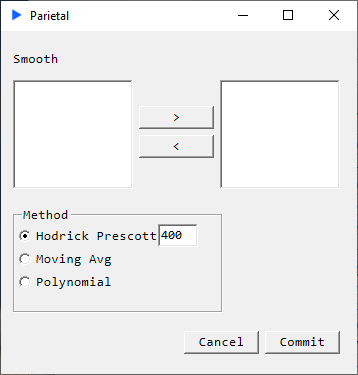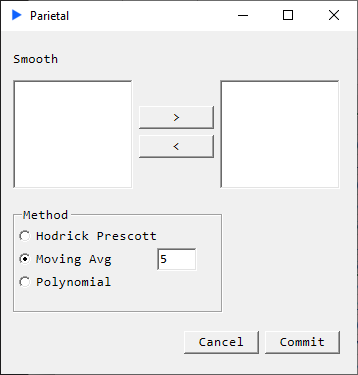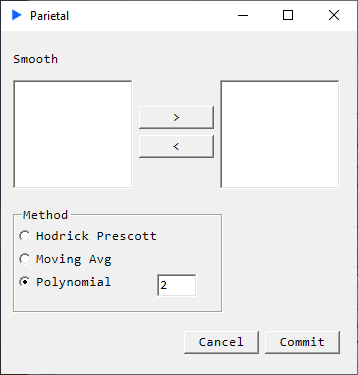Smoothing
This page describes routines that deal with smoothing data.
Method: Hodrick Prescott Filter

Description
Return a matrix that has been smoothed column-wise using the Hodrick Prescott filter. In other words, the HP filter extracts the trend component from a time series. Our implementation of the filter here makes two passes, forward and backward.
Smoothing increases with increasing parameter value.
While quite prevalent in econometric work, James Hamilton warns against using HP filters[1]. Other econometricians seem to think there are times when its ok[2].
Returns
- Smoothed matrix. I.e. a matrix with trend components, cyclical components are ignored.
Method: Moving Average

Description
Return a matrix that has been smoothed column-wise using a simple moving average.
Smoothing increases with increasing parameter value.
Returns
- Smoothed matrix.
Method: Polynomial

Description
Return a matrix that has been smoothed column-wise. The method fits a polynomial of a user specified order, decomposes the vector into trend and cycle components but only returns the trend component.
Smoothing increases with increasing parameter value.
A parameter value of 0 will simply return the means of the vectors.
Returns
- Smoothed matrix.